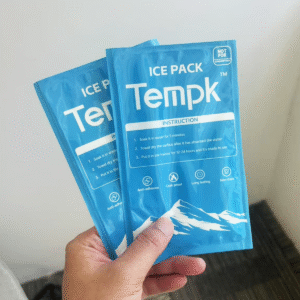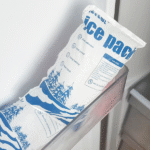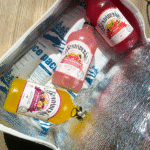Paquetes de hielo secos reutilizables: What to Buy & How to Ship
If you’re searching paquetes de hielo secos reutilizables, Aquí está la respuesta corta: real dry ice isn’t reusable, pero reusable −25 °C PCM “dry ice packs” can be refrozen for hundreds of cycles and shipped without dangerous goods labels. This guide shows what to buy, how to size for 24–96 hours, and how to stay compliant under 2025 rules—compiled from our three internal drafts and field playbooks.
-
What does “dry ice packs reusable” mean? Clear terms and when PCM outperforms dry ice.
-
¿Cuántos paquetes necesitas?? A simple 24–96 h sizing method with buffers.
-
¿Cuáles son los 2025 normas? IATA, PUNTO, and USPS checkpoints you must meet.
-
How to pack out right? A step‑by‑step that reduces breakage and claims.
-
Which option fits your lane? A quick chooser for food, farmacéutico, y comercio electrónico.
What does “dry ice packs reusable” mean in 2025?
Respuesta corta: “Dry ice packs reusable” usually refers to −21 °C to −26 °C phase‑change material (PCM) plates or bricks, not actual dry ice. hielo seco (solid CO₂ at −78.5 °C) sublimates and can’t be refrozen; PCM holds a stable frozen setpoint and recharges in a freezer. For many frozen foods and diagnostics, PCM maintains ≤ −20 °C without DG paperwork—simplifying acceptance and reducing cost.
Por qué te importa: If your spec is ≤ −50 °C or you need ultracold pulldown, usar hielo seco (often with VIP insulation). If your spec is −25 °C to −20 °C, paquetes de hielo secos reutilizables (PCM) are typically safer to ship, easier to handle, and cheaper long‑term because you reuse the elements.
−25 °C PCM plates for frozen food shipping
How they work: PCM behaves like a thermal battery—absorbing heat at its phase‑change temperature to keep your payload in a tight range. You’ll find rigid plates and flexible bricks conditioned to −25 °C to −26 °C for frozen lanes that don’t require dry ice. Resultado: temperatura estable, fewer labels, and repeat use.
| Opción de enfriamiento | Punto de ajuste | Reutilizable? | Meaning for You |
|---|---|---|---|
| hielo seco (Y 1845) | −78.5 ° C | No | Deep‑frozen biologics and hard‑frozen desserts; DG rules apply. |
| −25 °C PCM packs | −21 °C to −26 °C | Sí | Dry ice packs reusable alternative for frozen foods/diagnostics; no DG labels. |
| personaje + hielo seco | −70 °C band | Sí (recipiente) | Longer hold times with less dry ice; great for 3–6‑day ultracold lanes. |
Practical tips that prevent warmups
-
Condition fully: Freeze PCM to spec; under‑frozen packs underperform.
-
Six‑sided coverage: Surround the payload to avoid hot spots.
-
Llenar los vacíos: Tight dunnage prevents convection and adds hours.
Estuche de campo: A kit shipper replaced foam + dry ice with a reusable VIP system and cut dry ice by ~75%, achieving 144–240 h stability and fewer re‑icing events during delays.
Cuántos paquetes de hielo secos reutilizables do you need for 24–72 h?
Idea central: Plan by heat load, not guesswork. Dry ice commonly sublimates 5–10 lb por 24h in a cooler; para −21 °C to −25 °C PCM, compute energy (W×h), convert to latent capacity, and add a buffer. Empezar aquí, then lane‑test.
Reference doses (ballpark):
-
48 H, good liner, hielo seco: ~19 lb including margin.
-
48 H, good liner, −21 ° C PCM: ~1.25–1.7 kg PCM for a 5 kg payload; Verificar con una prueba de carril.
A mini chooser for paquetes de hielo secos reutilizables
-
≤ −50 °C target: Use VIP + hielo seco; declare net kg and apply Class 9 label.
-
−25 °C to −20 °C target: Usar paquetes de hielo secos reutilizables (−25 °C PCM) on six sides; agregar 25% buffer.
-
Mixed kits: Híbrido (PCM sides + small dry ice topper) and qualify the profile.
Hielo seco vs. −25 °C PCM: which is better for your lane?
Final: Use hielo seco for ultracold or rapid pulldown. Use −25 °C PCM when your spec is frozen (≤ −20 °C) and you want reusable assets, simpler compliance, and lower total cost per shipment.
| Aspect | Hielo seco (Co₂) | −25 °C PCM (“dry ice packs reusable”) | Meaning for You |
|---|---|---|---|
| Temperatura | ~ −78.5 ° C | −25 °C setpoint | Match to product needs; avoid over‑freezing foods with PCM. |
| Reutilizabilidad | De uso único | De uso múltiple | Reuse reduces cost and waste. |
| Cumplimiento | Y 1845, Clase9 | Typically non‑DG | PCM avoids hazmat labels/documents. |
| Hold time (with right box) | 24–72 h typical | 24–96 h typical | VIP improves either approach. |
Can you ship paquetes de hielo secos reutilizables and stay compliant in 2025?
Yes—if you follow the current rules. Para air shipments with dry ice, use IATA PI 954: envasado ventilado, Class 9 diamond ≥ 100 mm, “UN 1845,” and net dry‑ice mass (kilos) en el cartón exterior. A NOSOTROS. 49 CFR§173.217 mirrors venting/marking, y Aire de USPS limits parcels to ≤5lb hielo seco. Passengers may carry ≤2.5 kg with airline approval in a vented package. Usando paquetes de hielo secos reutilizables (PCM) avoids most DG steps for frozen ranges.
Fail‑safe checklist: Patio de ventilación abierto; Class 9 label (no writing inside diamond); “Dióxido de hielo seco/carbono, Sólido," Y 1845, net kg on the box; acceptance variations cleared with the carrier.
Cómo empacar paquetes de hielo secos reutilizables envío (paso)
Meta: Keep temperature in range while minimizing claims.
-
Condición previa
-
Dry ice route: stage product ≤ −20 °C; pre‑cool liner.
-
PCM route: freeze packs to spec; confirm core temp; wipe frost.
-
-
Build the base
-
hielo seco: pellets/slabs with a mesh pad for gas flow.
-
PCM: panels on six faces for an even isotherm.
-
-
Load the payload
-
Bag items; add dunnage; place the logger in the core.
-
-
Top‑off & close
-
hielo seco: add top layer; tape seams but keep a vent path.
-
PCM: close tightly; avoid airtight seals.
-
-
Etiqueta & handoff
-
hielo seco: Class 9 label, Y 1845, Kg neto; add AWB notes.
-
PCM only: standard docs; no DG label.
-
Actionable tips for your scenarios
-
Frozen meal kits (48 H, verano): Use −25 °C PCM on six sides, good EPS, and a kraft spacer above product; agregar 25% time buffer.
-
Biológicos (−70 °C, 3–5 days): Cargador VIP + hielo seco; declare net kg; pre‑load carrier variations.
-
D2C frozen snacks: Dry ice packs reusable + QR return program; eliminate hazmat surcharges and simplify CS scripts.
Real example: A seafood brand switched from 12–15 lb dry ice to −21 °C PCM + personaje. Refunds fell and DG defects disappeared; 72 h hold met summer tests with a 25% margin.
2025 trends shaping paquetes de hielo secos reutilizables decisions
Trend snapshot (2025): Airlines reiterate dry‑ice acceptance (100 mm Class 9 label, declared net mass), mientras reusable VIP shippers y stronger sub‑zero PCMs expand, reducing re‑icing and DG complexity for many lanes. El dry‑ice market keeps growing (forecast ~USD 1.66 B in 2025 to ~USD 2.73 B by 2032), but reusable systems gain share in food and healthcare.
Último progreso de un vistazo
-
Less dry ice, more reuse: VIP parcels cut dry‑ice mass by ~75% and hold 120–240 h.
-
−25 °C PCMs mainstream: Non‑DG “paquetes de hielo secos reutilizables” enable frozen lanes with simpler handoffs.
-
Standardized validation: ISTA 7E profiles help buyers compare apples to apples across vendors.
Insight del mercado: Expect a hybrid toolkit: dry ice for ultracold; paquetes de hielo secos reutilizables (PCM) for −25 °C to −20 °C where reuse lowers cost and risk.
Preguntas frecuentes
Q1: Are “dry ice packs reusable” actually dry ice?
No. Dry ice sublimates and can’t be reused. The reusable products are −25 °C PCM packs you refreeze for repeated use.
Q2: How long will dry ice last?
Plan 5–10 lb por 24h Dependiendo del aislamiento y el calor ambiental; validate on your route.
Q3: Do PCM packs require hazmat labels?
Típicamente No. That’s a primary advantage of paquetes de hielo secos reutilizables para carriles congelados.
Q4: Can passengers fly with dry ice?
Sí-≤2.5 kg (5.5 lb) por pasajero con aprobación de la aerolínea, contenedor ventilado, y etiquetas.
Q5: What’s the fastest way to size a 48 h PCM pack‑out?
Compute heat leak (W) × hours, divide by PCM Wh/kg, agregar 25–50% buffer, then chamber‑test to ISTA 7E.
Resumen & recomendaciones
Puntos clave: Dry ice packs reusable usually means −25 °C PCM you can refreeze; size by heat load; y seguir 2025 IATA/DOT/USPS rules whenever you use real dry ice. Use VIP + dry ice for ultracold; use PCM for most frozen food and diagnostics to simplify and reuse assets.
Siguientes pasos:
-
Pick your lane target (≤ −70 °C vs. −25 °C to −20 °C).
-
Run a 24–72 h worst‑case pack‑out test with a logger.
-
Document labels/SOPs and build a PCM rotation plan.
CTA: Want a lane‑specific pack‑out? Book a 20‑minute consult with Tempk.
Acerca de Tempk
We’re a cold‑chain solutions team focused on practical, test‑backed pack‑outs. Diseñamos, qualify, and supply reusable PCM plates y Cargadores VIP that cut dry‑ice mass, reduce freight, and simplify compliance. Two advantages clients like: lane‑validated kits with clear SOPs and label templates, and lower total cost per shipment—without surprises at hubs.
























